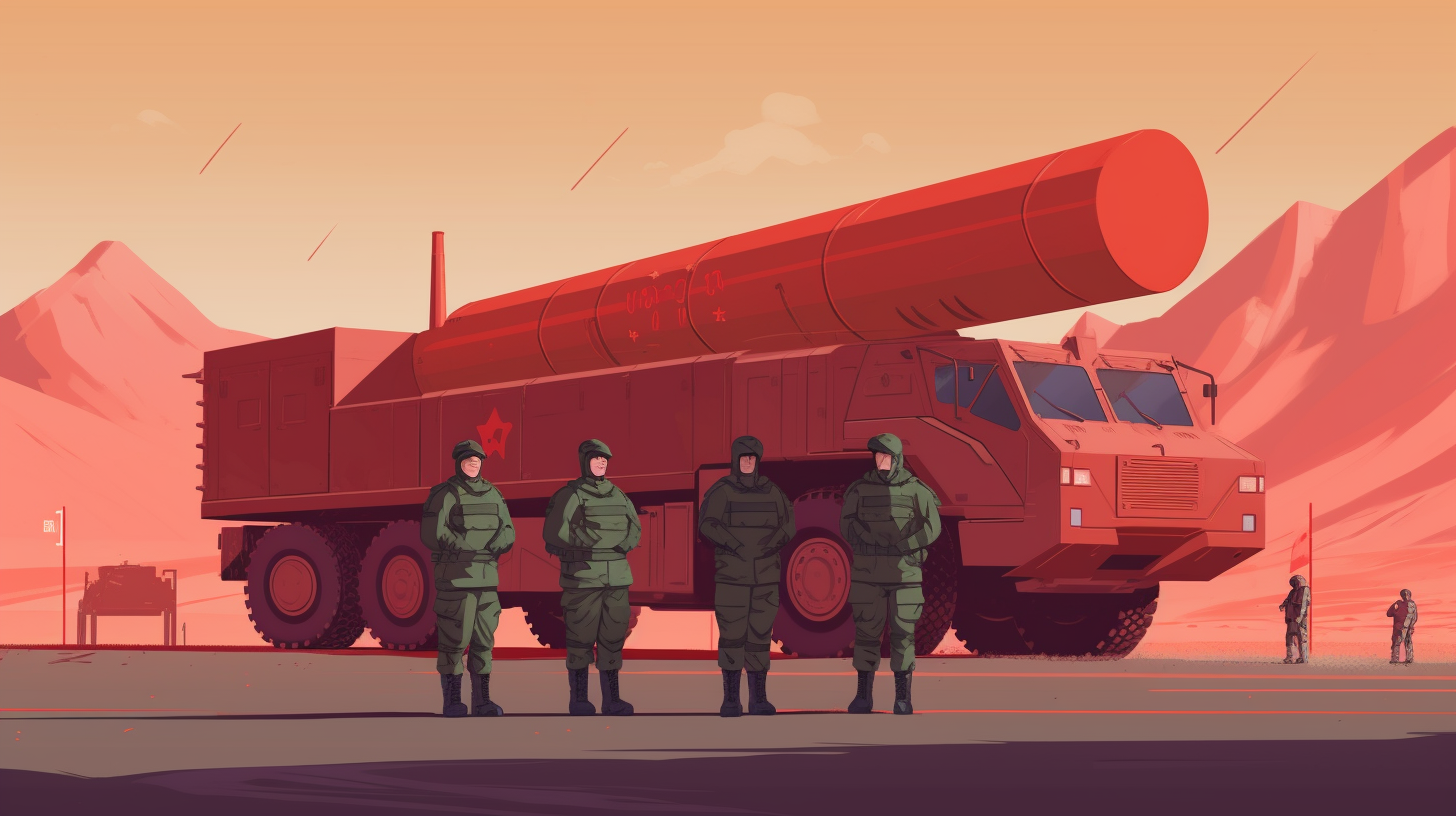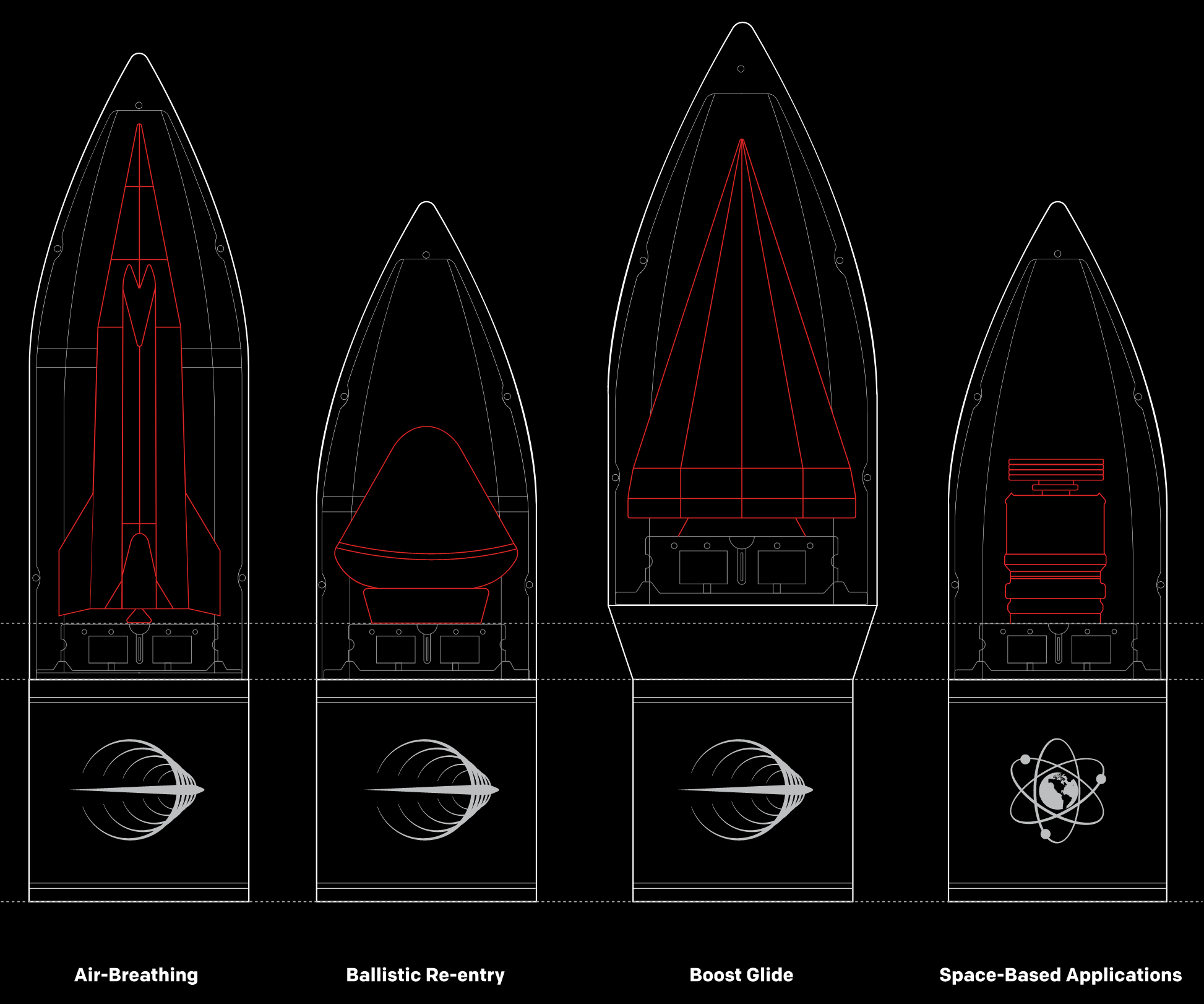Transforming the Battlefield: Hypersonic Weapons in a Potential China-US Conflict Over Taiwan
This analysis delves into the impact of hypersonic weapons on warfare, using a potential China-US conflict over Taiwan as a case study. Key aspects discussed include speed, stealth, and lethality, along with challenges in decision-making, stability, and diplomacy.

This analysis of hypersonic weapons was created with multiple GPT-4 prompts and one prompt (focused on the recent announcement in this domain by Rocket Lab) that levereged the browsing plugin for ChatGPT. The model created the post title and excerpt as well. Links were added by me.
I created the cover photo for this post with Midjourney.
Hypersonic weapons, which travel at least five times the speed of sound (Mach 5), represent a new class of military technology with the potential to revolutionize warfare. These systems are difficult to detect, track, and intercept, and they possess immense destructive power. This analysis will examine the impact of hypersonic weapons on the future of warfare, using a potential conflict between China and the United States over Taiwan as a case study. The analysis will also consider how both China and the US could leverage these weapons to their advantage in the event of a conflict.
Hypersonic Weapons: A Game Changer in Warfare
Speed and range: Hypersonic weapons offer unprecedented speed, with the ability to cover vast distances in a short amount of time. This speed can give military forces a significant advantage in striking targets before an enemy can react, potentially changing the outcome of a conflict.
Stealth and maneuverability: Due to their high speed, hypersonic weapons can evade traditional air and missile defense systems. Additionally, they are capable of maneuvering during flight, making them even harder to track and intercept.
Precision and lethality: Hypersonic weapons provide a high degree of accuracy, allowing for precise targeting of critical military and infrastructure assets. Their extreme speed also increases their kinetic energy, resulting in significant destruction upon impact.
Countermeasure challenges: Hypersonic weapons pose a significant challenge for current defense systems. Developing effective countermeasures will require significant technological advancements and a new generation of defense systems.
China's Utilization of Hypersonic Weapons in a Potential Conflict Over Taiwan
China has been actively pursuing hypersonic weapon technology, recognizing the strategic advantages it can offer in potential conflicts. With a focus on enhancing its offensive capabilities and achieving a more assertive regional posture, China has made significant progress in the development of hypersonic glide vehicles and cruise missiles. Successful tests of systems like the DF-17 and the WU-14 have demonstrated China's commitment to this emerging technology. As China continues to advance its hypersonic weapon programs, the balance of power in the region could shift, further complicating the delicate geopolitical landscape.
Preemptive strike capabilities: Hypersonic weapons could provide China with the ability to launch preemptive strikes against US military installations in the Asia-Pacific region. This would severely hinder US power projection capabilities, potentially shifting the balance of power in the region.
Anti-access/area denial (A2/AD) strategy: China could deploy hypersonic weapons as part of its A2/AD strategy to deny US forces access to the Taiwan Strait and surrounding areas. By targeting US aircraft carriers, destroyers, and air bases with hypersonic missiles, China could limit the US's ability to support Taiwan in the event of a conflict.
The United States' Utilization of Hypersonic Weapons in a Potential Conflict Over Taiwan
The United States has placed a strong emphasis on hypersonic weapon development, aiming to maintain its technological edge in the face of growing strategic competition. Despite progress in programs such as the AGM-183A Air-launched Rapid Response Weapon (ARRW) and the Long-Range Hypersonic Weapon (LRHW), the US has faced some challenges due to the slow pace of testing. This has, at times, hampered efforts to rapidly expand offensive capabilities, strengthen deterrence, and support allies in the Asia-Pacific region. As the US continues to advance its hypersonic weapon systems, it must address testing delays and other obstacles in order to effectively adapt and respond to evolving threats and challenges in the global security environment.
Offensive capabilities: The US could leverage hypersonic weapons to launch rapid strikes against Chinese military assets, including naval vessels, air defense systems, and command and control centers. By disrupting China's military infrastructure, the US could weaken China's ability to wage war and potentially force a quicker resolution to the conflict.
Strategic deterrence: Hypersonic weapons could serve as a strategic deterrent for the US, as their destructive power and rapid deployment capabilities may dissuade China from initiating hostilities in the first place.
Reinforcement of regional alliances: The US could share hypersonic weapon technology with its allies in the Asia-Pacific region, strengthening regional security and countering China's growing influence.

A Boost for US Hypersonic Development Efforts
On April 17, 2023, Rocket Lab announced its new HASTE (Hypersonic Accelerator Suborbital Test Electron) launch vehicle, designed to provide high-cadence suborbital flight tests to advance hypersonic technology development. HASTE addresses the U.S. Department of Defense's (DoD) need for reliable and cost-effective hypersonic testing capabilities, which have previously been limited. As a fully operational launch vehicle, HASTE will allow for rapid and frequent hypersonic and suborbital tests from Rocket Lab's existing launch site in Virginia, accelerating U.S. and allied progress in the hypersonic domain.
Potential Consequences of Hypersonic Weapons in a Conflict Over Taiwan
Shortened decision-making time: The speed of hypersonic weapons significantly reduces the time available for decision-making and response in a crisis. This could result in rushed decisions, mistakes, and miscalculations, increasing the risk of unintended escalation.
Heightened instability: The unpredictability and destructive power of hypersonic weapons could lead to increased instability in the region. The fear of a devastating first strike might compel both sides to adopt a "use it or lose it" mentality, escalating the conflict more quickly.
Challenges for diplomacy and crisis management: The rapid pace of events in a conflict involving hypersonic weapons could make it difficult for diplomacy and crisis management to keep up. This might hinder efforts to de-escalate tensions and prevent further escalation.
Arms race and proliferation: The introduction of hypersonic weapons could spark an arms race similar to the Cold War, with both countries striving to develop and deploy countermeasures and advanced defense systems. Furthermore, the proliferation of hypersonic weapons to other nations could have global implications for security and stability.
Impact on regional actors: The deployment of hypersonic weapons in a potential China-US conflict over Taiwan would likely compel regional actors to reconsider their security strategies. Countries like Japan, South Korea, and Australia may feel the need to develop or acquire their own hypersonic capabilities to maintain their security and regional influence.
Humanitarian and environmental consequences: The use of hypersonic weapons in a conflict could result in significant civilian casualties and widespread destruction of infrastructure. Additionally, the environmental impact of these weapons, such as the potential release of toxic materials upon impact, could have long-lasting effects on affected areas.
Conclusion
Hypersonic weapons are poised to become a critical component in the evolving landscape of warfare, especially in potential superpower conflicts, such as a confrontation between the United States and China over Taiwan. These advanced systems provide considerable advantages in terms of speed, stealth, and lethality, while simultaneously presenting new challenges for decision-making, stability, and diplomacy. As hypersonic technologies progress, it becomes increasingly important for policymakers to comprehend and address the wide-ranging implications they hold for the future of conflict and international relations.
In the context of superpower competition, mastering hypersonic capabilities will be a necessity, as they have the potential to tip the balance of power in any given confrontation. Both the US and China must carefully weigh the strategic ramifications of deploying hypersonic weapons, taking into account not only their military advantages but also the potential consequences of their use in a conflict. Understanding the complexities introduced by these high-speed systems will be vital for maintaining strategic stability and managing potential crises in an era marked by rapidly evolving military technologies.
Blogs of War generated this text in part with GPT-4, OpenAI’s large-scale language-generation model. Upon generating draft language, the author reviewed, edited, and revised the language to their own liking and takes ultimate responsibility for the content of this publication.
